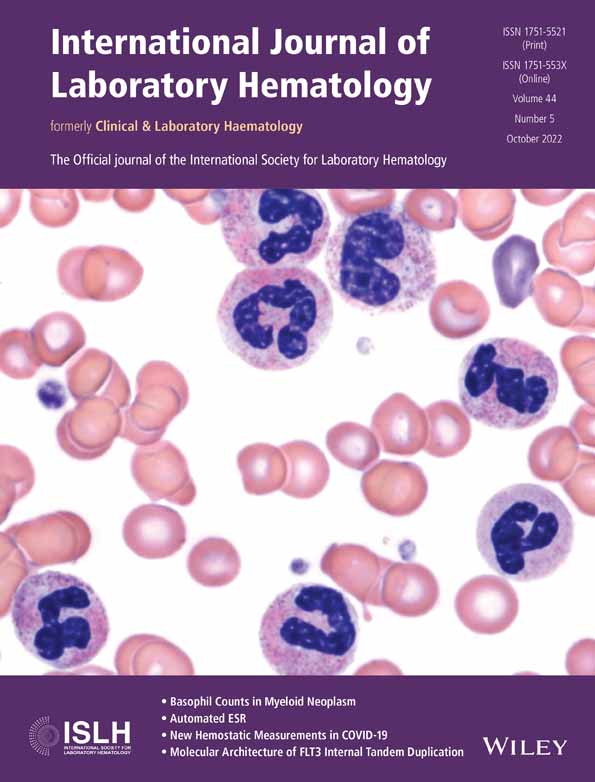PCR-Fluo-ASXL1-FA: A fast, sensitive and inexpensive complementary method to detect ASXL1 mutations in haematological malignancies
Abstract
Introduction
The additional sex combs like 1 (ASXL1) gene is frequently mutated in a number of haematological neoplasms. The c.1934dupG, known to be the most common alteration in ASXL1, is associated with poor clinical outcome. A systematic determination of ASXL1 mutational status in myeloid malignancies is therefore necessary for prognostic stratification.
Methods
Because direct sequencing is not sensitive and next-generation sequencing (NGS) is time-consuming, expensive and sometimes does not allow the detection of the c.1934dupG, we have developed a fragment analysis assay, complementary to NGS, that allows the detection of c.1934dupG mutation in addition to other nearby insertions/deletions of ASXL1 located close to it. We called this assay the “PCR-Fluo-ASXL1-FA.”
Results
First, we evaluated the efficiency of our approach compared to NGS and Sanger. We showed that “PCR-Fluo-ASXL1-FA” could detect all insertional mutations of ASXL1 located on its area, with a high sensitivity (1.5%). Then, we have illustrated the interest of this technique by three concrete cases.
Discussion
In summary, we have established a fragment analysis approach, which can detect most ASXL1 mutations, in particular the c.1934dupG, in a sensitive, fast and inexpensive manner. We therefore recommend the synchronous use of this method with NGS, to ensure complete detection of all clinically relevant ASXL1 mutations in patients suffering with myeloid neoplasms.
Open Research
DATA AVAILABILITY STATEMENT
The authors confirm that the data supporting the findings of this study are available within the article [and/or] its supplementary materials.




